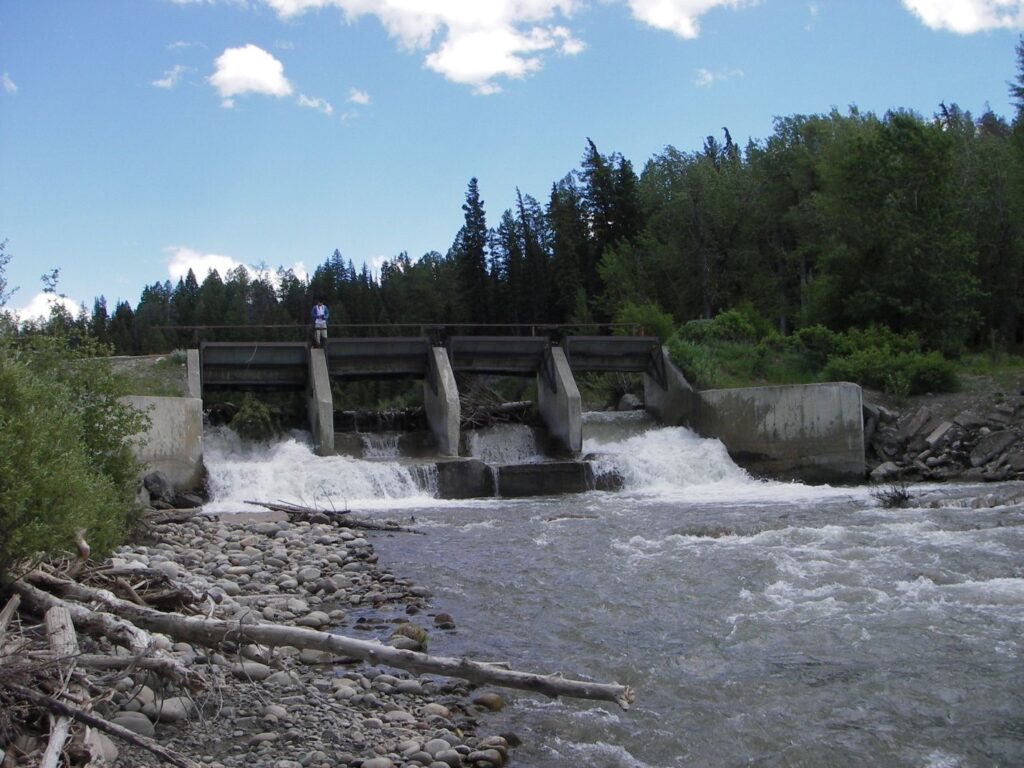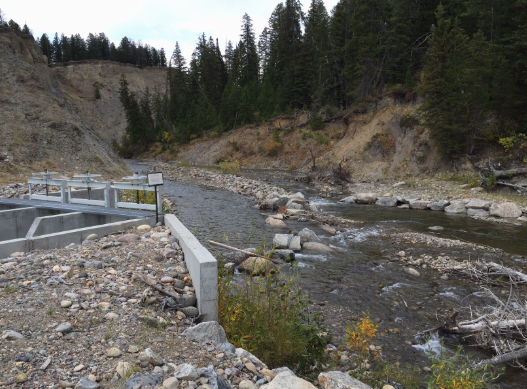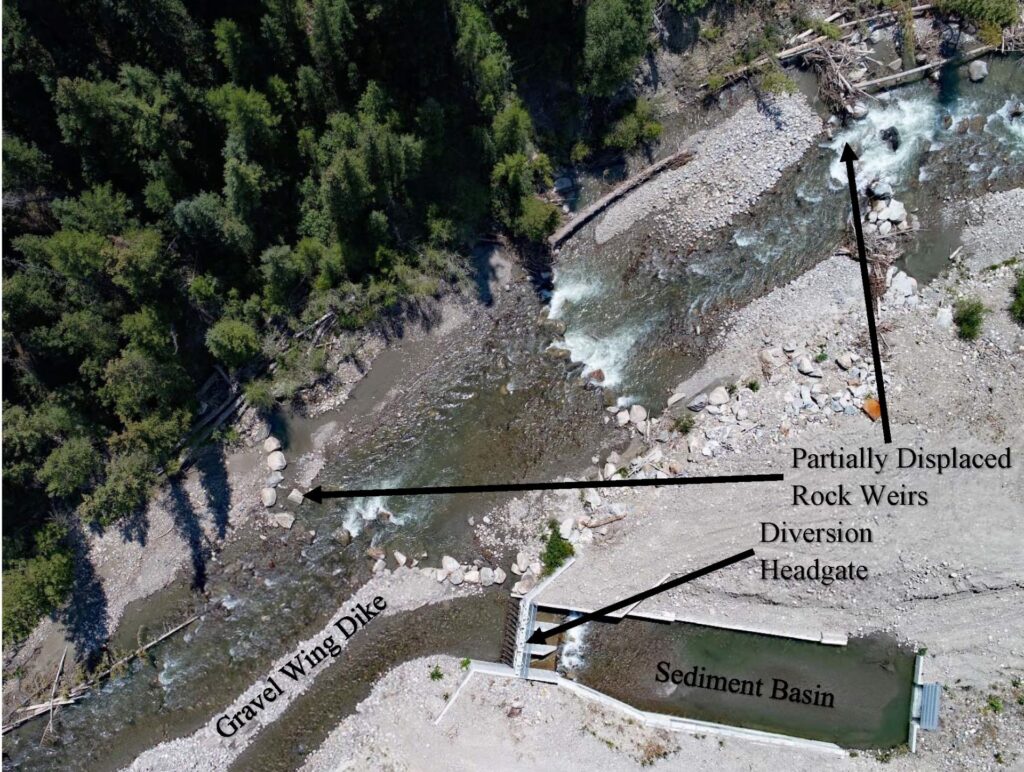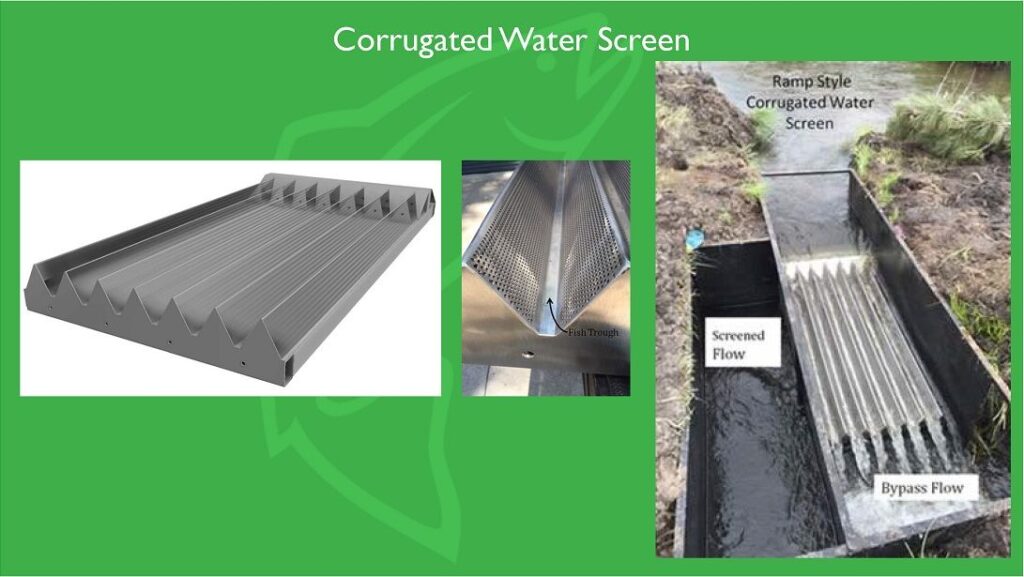In 2010, the Spread Creek dam, an obsolete, crumbling diversion dam for irrigation located just outside of Grand Teton National Park on Bridger-Teton National Forest lands, was removed by a partnership effort led by TU’s Wyoming Water Project, opening up over 50 miles of Spread Creek to migratory Snake River cutthroat trout for the first time in over 50 years.

Since the dam was removed and replaced with a fish passage-friendly diversion structure and new water delivery system, project partners have documented successful fish movement through the new diversion, but have also documented fish entrained in the Spread Creek irrigation system. Phase 2 of the Spread Creek Fish Passage project will prevent future losses of migratory cutthroat trout to the Spread Creek system by installing a fish screen that returns entrained fish to Spread Creek and by stabilizing the diversion structure (which was damaged by flooding in 2011 and 2018).

Spread Creek is located along the east margins of Grand Teton National Park, near Jackson Hole, Wyoming. Lower Spread Creek traverses through relatively pristine National Park lands before joining the Upper Snake River approximately 15 miles below Jackson Dam. This lower section historically served as a migration corridor for fluvial Snake River fine spotted cutthroat trout, while the upper portion of Spread Creek serves as important spawning and rearing habitat for fluvial fish and as a year-round home for resident native cutthroat trout. As a result of the Phase 1 project completed in 2010, upper and lower Spread Creek is now connected, and a modernized diversion structure allows water users the ability to divert irrigation water while maintaining fish passage throughout the year. These improvements require less annual and seasonal disturbances to Spread Creek and the associated riparian area caused by instream heavy machinery.

Post-dam removal monitoring by project partners documented the successful movement of migratory cutthroat trout throughout the Spread Creek drainage and through the former dam site. However, it also illustrated the need for fish screens on the Spread Creek irrigation system’s ditches. With the increased use of upstream habitat for spawning and rearing, many juvenile and adult cutthroat trout and other native nongame fish species are being swept into the ditches when trying to out-migrate throughout the year. In addition, flooding in 2011 damaged the diversion structure’s rock weirs, leading to issues with water delivery and channel scouring. TU worked with project partners to facilitate maintenance of the rock weirs in winter 2016 to fix and prevent further damage to the diversion
However, a more stable, long-term solution was needed to provide more reliable water delivery to irrigators, establish design flows for the fish screen, and re-establish optimal hydraulics for fish passage, as evidenced by continued damage and issues with maintaining water delivery during high flow events in the 2017 and 2018 irrigation seasons and associated sedimentation and bank instability. The washout of the Park’s access road to the site in 2018 and the observation of a headcut moving upstream in the direction of the diversion demonstrate Spread Creek’s extreme instability and risk to irrigation infrastructure.

Phase 2 of the Spread Creek Fish Passage Restoration Project ensures unimpeded migration between the Snake River and Spread Creek by installing a fish screen that prevents losses of native fish and by stabilizing, improving, and protecting the diversion and streambanks within the project area. It accomplishes this by 1) installing a fish screen in the diversion; 2) rehabilitating the diversion structure for long-term stability; and 3) adding instream structures to protect banks and irrigation infrastructure within the project area.
Click here to read the November 2019 feature article about the project in the Jackson Hole News and Guide.
Project partners to date include the Bridger-Teton National Forest, Community Foundation of Jackson Hole, Grand Teton National Park, Jackson Hole One Fly, Jackson Hole Trout Unlimited, Knobloch Foundation, Marine Ventures Foundation, Moosehead Ranch, National Fish and Wildlife Foundation, Orvis, Patagonia World Trout, Snake River Fund, Teton Conservation District, Triangle X Ranch, US Fish and Wildlife Service, United States Geological Survey, Vail Resorts Epic Promise, Western Native Trout Initiative, WorldCast Anglers, Wyoming Game and Fish Department, Wyoming Water Development Commission, and Wyoming Wildlife and Natural Resources Trust.